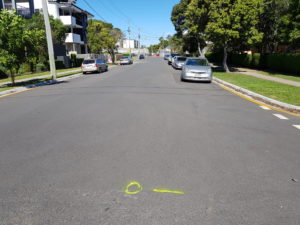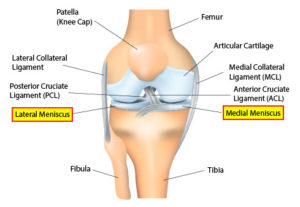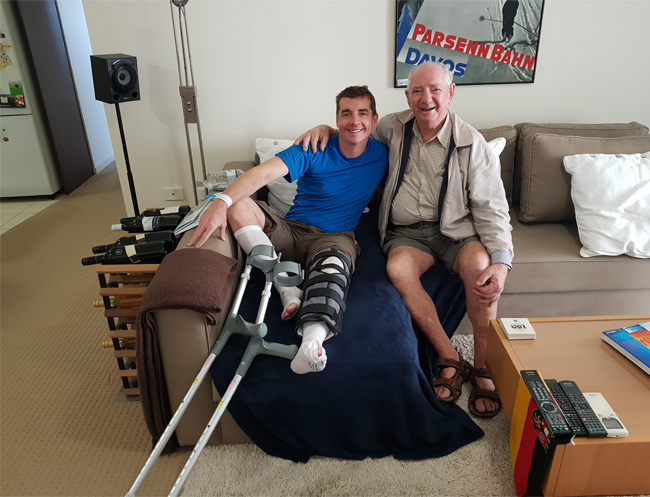Best Laid Plans

Start of the 100 metres
The fateful ‘one hundred’
I’ve always loved running. As a kid, my best events were the one and two hundred metre sprints. On a sunny winter’s afternoon in July, I decide to go for a 30 minute run. At the end, I time myself sprinting a ‘one hundred’. I have the distance marked out on a stretch of road. I set my stop watch, crouch down, suck in three deep breaths. I click the timer. The next thing I know, I’m punching out of my stance like a rocket! ONE-TWO-THREE-FOUR-FIVE strides. I’m gaining momentum and I’m gradually rising to my full height, pushing my chest out allowing my body to go as fast as I can. I love the sensation. Then suddenly without any warning I feel a ‘twanggggggggg’. My left knee snaps like a huge rubber band. There’s no pain but I know immediately this isn’t good and I pull up lame.
The following day I see my doctor. An MRI scan reveals a damaged meniscus. My doctor says, “Lucky it’s not your ACL [Anterior Cruciate Ligament], that’s a long rehab process”. While none of this is great, I’m aware it could be a lot worse. An appointment is made for me to see an orthopaedic surgeon that afternoon.
MRI of Daryl’s left knee which showed the surgeon the extent of the devastating injury
My father, Alan Green, drops by my apartment just before I’m due to head to the ortho. I update him on my knee. So we can spend some more time together, I suggest he accompanies me to the appointment. Dad sits in on the consultation. The surgeon asks me how I injured my knee and I tell him my sorry tale. He says, “You have a one percenter injury. You’ve torn your meniscus from the root. It’s very rare and very serious. It’s normally associated with the kind of trauma we see from a parachuting incident. We have an 80% chance of successfully repairing the meniscus, otherwise you face life long consequences such as not being able to run.” I’m absolutely flawed, as is dad. After the initial shock, I ask about my options should the surgery not be successful. He talks about breaking a leg bone and realigning it to move the pressure on the knee joint. I sleep uneasily that night.

Anatomy of the knee
Under the knife
On Tuesday 15 August 2017, I’m in hospital. Keyhole surgery is used to reattach my medial meniscus (the inside of the knee). The detached meniscus, which has coiled up at the back of my knee and feels like a sponge, is pulled forward to the front of the joint. The end of the meniscus, and the bone area it will be attached to, are scored or roughed up to assist them to knit together. Lastly, a screw is inserted through the meniscus into the bone to affix the root in place. Thankfully, the operation is deemed a success. Despite this, the recovery ahead challenges me more than I could ever have imagined. Yet, as so often happens in life, it also brings me an incredible opportunity. I’m looking forward to sharing this with you in the next instalment.

The operation is a success! Smiles all around from me, dad and great mate, Neil Robson





